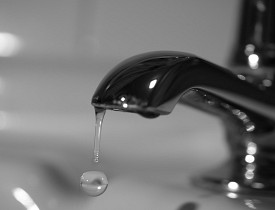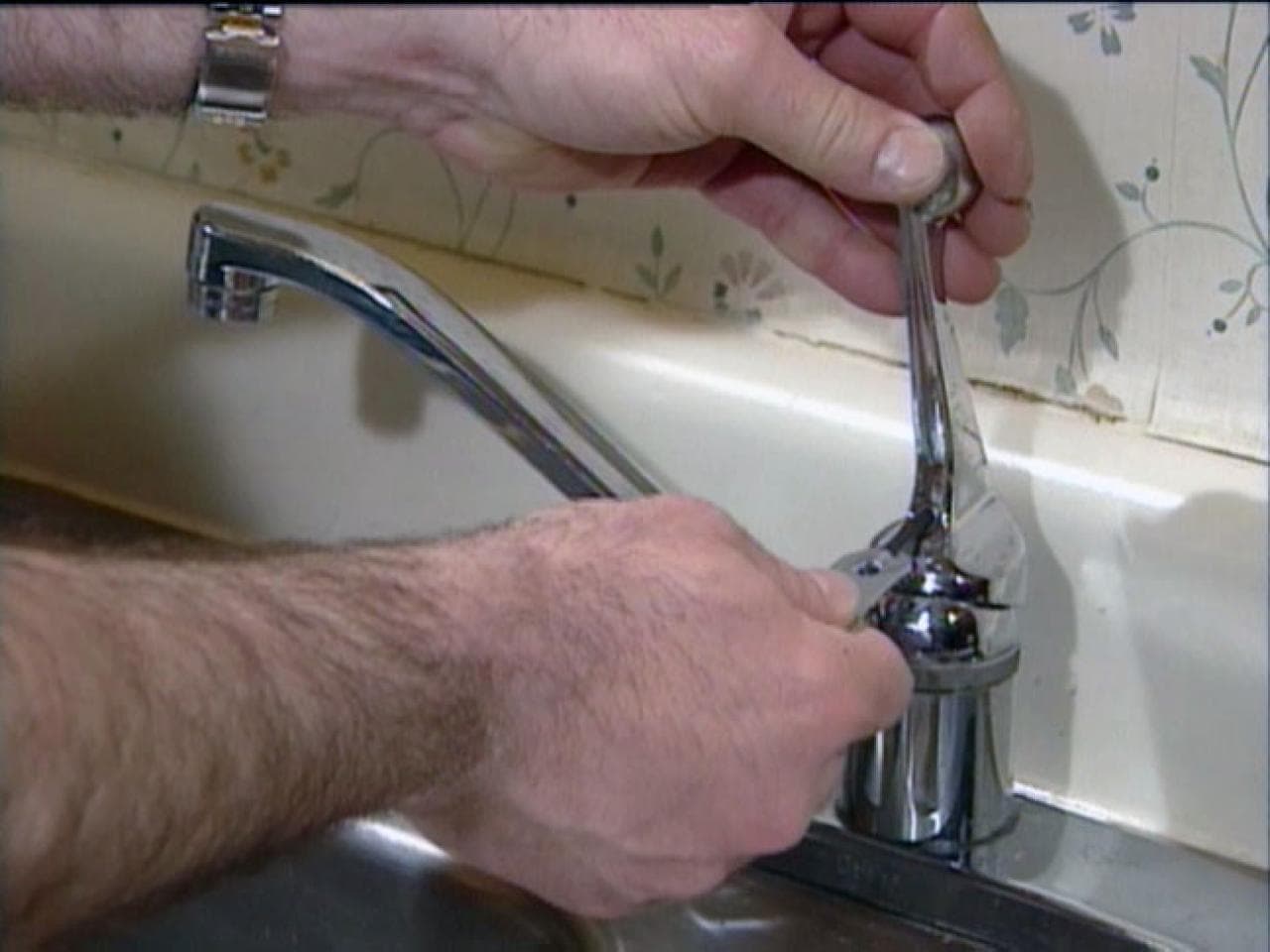How It's Important to Rectify a Malfunctioning Faucet
How It's Important to Rectify a Malfunctioning Faucet
Blog Article
The content on the next paragraphs in relation to Leaky Faucets: Why They Happen & What to Do About Them is highly captivating. Have a go and draw your own results.

Trickling taps might seem like a minor hassle, but their impact surpasses simply the nuisance of the noise. From wasting water to sustaining unnecessary financial prices and health and wellness risks, ignoring a trickling faucet can bring about different consequences. In this write-up, we'll explore why it's essential to resolve this common household problem promptly and successfully.
Wastefulness of Water
Environmental Influence
Trickling faucets add significantly to water wastage. According to the Epa (EPA), a solitary tap dripping at one drip per second can throw away more than 3,000 gallons of water per year. This not only stress water sources however additionally influences ecosystems and wildlife dependent on them.
Step-by-Step Guide to Repairing a Dripping Faucet
Tools Needed
Before attempting to repair a dripping tap, collect the needed tools, including a flexible wrench, screwdrivers, replacement components (such as washers or cartridges), and plumber's tape.
Usual Tap Issues and Their Solutions
Recognize the type of faucet and the certain concern causing the drip. Typical issues consist of damaged washing machines, corroded valve seats, or defective O-rings. Describe maker guidelines or on the internet tutorials for step-by-step support on repair services.
Financial Prices
Raised Water Costs
Past the ecological effect, leaking faucets can inflate water bills substantially. The built up wastefulness gradually translates into higher utility expenses, which could have been avoided with timely fixings.
Prospective Residential Property Damage
In addition, extended leaking can bring about harm to components and surface areas bordering the faucet. Water build-up can trigger staining, corrosion, and even structural concerns if left neglected, leading to extra repair work costs.
Wellness Problems
Mold and Mildew Development
The continuous presence of dampness from a leaking tap produces an optimal environment for mold and mildew and mildew development. These fungi not just compromise interior air quality however also present health dangers, particularly for people with respiratory conditions or allergic reactions.
Waterborne Diseases
Stagnant water in leaking taps can become a breeding ground for microorganisms and various other pathogens, enhancing the danger of waterborne conditions. Impurities such as Legionella microorganisms thrive in stagnant water, potentially resulting in severe ailments when consumed or breathed in.
Do it yourself vs. Expert Repair service
Advantages and disadvantages of DIY Fixing
While some may try to deal with a leaking faucet themselves, do it yourself repairs feature their own collection of challenges. Without correct knowledge and tools, do it yourself attempts can worsen the issue or result in insufficient repair work, extending the trouble.
Benefits of Employing a Specialist Plumber
Hiring an expert plumber makes certain that the underlying cause of the dripping faucet is dealt with successfully. Plumbers possess the competence and tools to detect and fix tap concerns successfully, conserving time and decreasing the threat of further damage.
Ecological Obligation
Private Payment to Preservation
Taking duty for dealing with trickling faucets aligns with wider initiatives toward water preservation and ecological sustainability. Every individual's actions jointly make a considerable effect on preserving valuable resources.
Lasting Living Practices
By prioritizing punctual repair services and adopting water-saving behaviors, individuals contribute to lasting living methods that profit both present and future generations.
Safety nets
Normal Maintenance Tips
To stop dripping faucets, do routine maintenance such as cleaning up aerators, inspecting for leaks, and changing worn-out parts immediately. In addition, consider setting up water-saving gadgets or updating to extra reliable components.
Importance of Prompt Repair Works
Attending to leaking taps as soon as they're observed stops additional water wastefulness and possible damages, eventually saving both water and money in the long run.
Impact on Home Value
Perception of Well-Maintained Property
Keeping a property in good condition, including dealing with maintenance issues like dripping taps, improves its viewed value and worth amongst potential customers or tenants.
Impact on Resale Worth
Residences with well-maintained plumbing components, including taps, command greater resale values in the property market. Attending to dripping taps can contribute to a favorable impression throughout residential or commercial property examinations and negotiations.
Final thought
Addressing a leaking tap goes beyond simple benefit; it's a crucial step toward preserving water, reducing monetary expenses, and guarding health and residential or commercial property. Whether with do it yourself fixings or professional assistance, doing something about it to repair leaking taps is a tiny yet impactful method to advertise responsible stewardship of resources and contribute to a healthier, much more sustainable future.
How to Fix a Dripping or Leaky Faucet
A leaking faucet is one of the most common problems that homeowners encounter, but it being commonplace doesn’t make it any less annoying. The constant drip drip drip of a leaking bathtub faucet, showerhead, or sink tap can disturb your home’s serenity. Left neglected, a dripping faucet can also result in higher water bills and discoloration or mold growth in your sink or plumbing fixtures.
Fortunately, you don’t have to be a trained plumber to know how to stop a dripping faucet. With some basic tools, replacement parts, and a little patience, leaky faucet repair is a breeze. In this article, we’ll explain what causes dripping faucets and how you can fix them.
What Causes a Leaking Faucet?
Kitchen and bathroom faucets come in all manner of designs, but most involve some combination of valves, O-rings, seals, and washers. The O-ring is usually the weakest link, but any one of these pieces can wear down over time. Heat, moisture, temperature fluctuations, minerals, mold, and movement can contribute to warping and corrosion, breaking the watertight seal. This just comes with the territory of being a homeowner. Everything is always subject to wear and tear, and some component parts of your appliances and fixtures need to be replaced on occasion. At least replacement O-rings are cheap!
More rarely, dripping faucets can be a symptom of excessively high water pressure. Were this the case in your home, you would probably notice that the leak is not isolated to one faucet. Water pressure issues are harder to resolve on your own. We recommend contacting a professional plumber if you suspect your water pressure is too high.
How to Fix a Dripping Faucet
Pipe wrench or monkey wrench Allen wrench set Screwdrivers Old towel or rag Shut off the water.
Before you do anything, you need to turn off the water to keep from drenching your kitchen or bathroom. You should find a valve under the sink and against the wall. Once you’ve turned this valve, try turning the faucet on to confirm that the water source has been cut off.
If you can’t locate your local valve for the faucet you’re working on, you can always shut off the water to the house at the main valve. Of course, this will prohibit anyone from using the sinks, showers, or toilets while you’re working on the faucet that’s giving you trouble.
Plug or block the drain.
You’ll be disassembling the faucet and removing some small bits of hardware. Plug the drain with a stopper or rag to avoid the possibility of a small screw falling into your P-trap.
Take apart the faucet assembly.
There are several varieties of kitchen and bathroom faucets, each with its own manner of assembly. For detailed instructions on how to disassemble your faucet, you can refer to the fixture’s manual or contact the manufacturer. If you know whether you have a ball, disc, cartridge, or compression faucet, you can find detailed schematics online.
In general, you need to begin by removing the faucet handles. You might notice a small screw that you’ll need to remove with a screwdriver or Allen wrench. If you don’t see any visible securing hardware, it’s likely hidden under a decorative cap that can be unscrewed or popped off with flathead screwdriver.
Remove each piece methodically, consulting a schematic when necessary. Take notes or arrange the pieces in such a way to make it easier to correctly reassemble the faucet later.
Remove the cartridge.
Once you’ve removed the handles and securing hardware, you should be able to remove the valve cartridge or stem. Some cartridges will slide right out. Other faucet models will require you to loosen a nut with a pipe wrench before you can remove the valve stem.
Examine the exposed hardware.
With the cartridge or stem removed, inspect the component parts. Check the rubber O-rings for wear and tear. Also examine the seat washer for corrosion or other damage. These pieces are usually the responsible parties for a dripping faucet, but it’s worth inspecting the other component parts while you have the faucet disassembled.
Find replacement parts.
Once you’ve identified which faucet component has failed, find an identical replacement. Your local hardware store should have O-rings, seat washers, and other standard components in stock. If you have a luxury or uncommon faucet, you may have to contact the manufacturer for a replacement part.
It’s a good idea to take your old parts with you to the hardware store so you can compare them with the store’s inventory and be sure you’re purchasing the correct replacement.
Reassemble the faucet.
With your new parts in hand, reconstruct the faucet and handles. Don’t be tempted to overtighten screws or nuts. You might think this could create a better seal, but it can instead damage or bend a delicate part of the assembly and create a new problem for you.
Turn on the water and test the faucet.
The only thing left to do is test your work. Unplug the sink, turn the water back on, and try the faucet. Congratulate yourself on a job well done!
https://www.libertyhomeguard.com/how-to-fix-a-dripping-or-leaky-faucet/

As a devoted person who reads on What Causes Leaky Faucets & How To Fix Them, I thought sharing that piece of content was sensible. I beg you take the time to distribute this article if you liked it. I am grateful for being here. Return soon.
Report this page